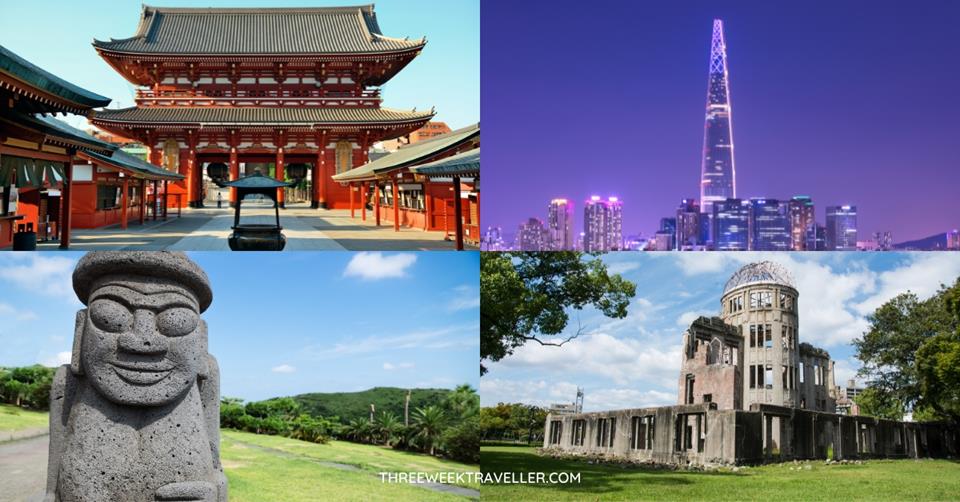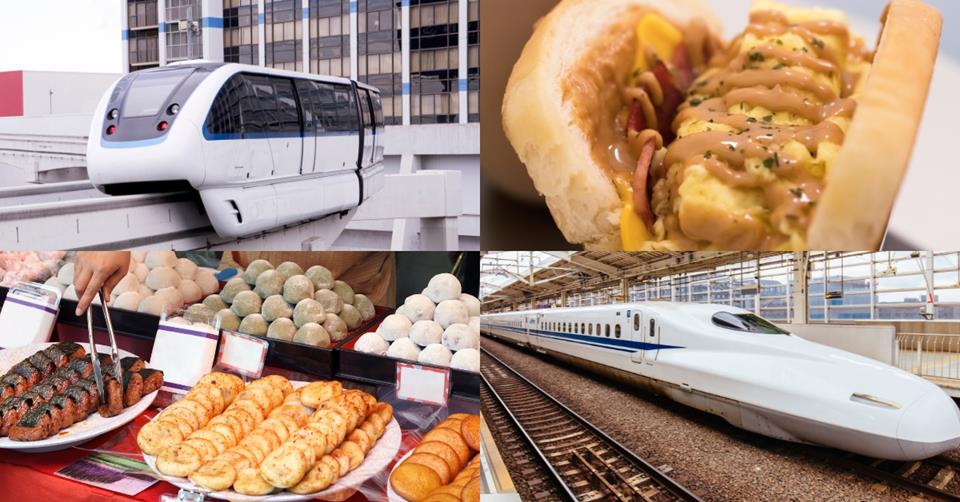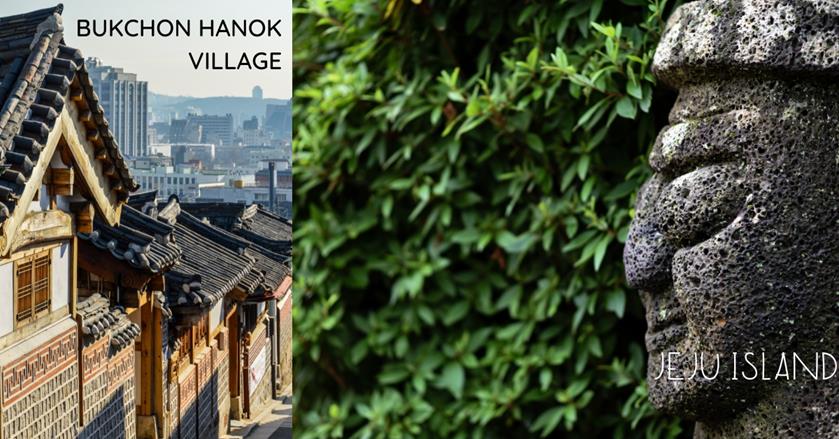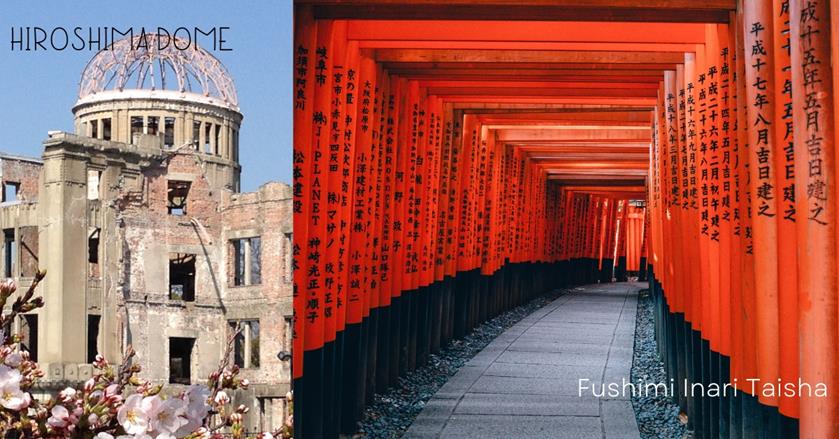For various reasons, Japan and South Korea are on almost everyone’s bucket list. These two countries are right next to each other and 20 days is a bit too much time to spend in just one country – so, why not visit both?
Aside from the beautiful scenery and a variety of healthy foods, people are also fascinated with Japan and South Korea’s culture, anime, manga, K-dramas, K-pop, and of course, their history.
These days, some people would even travel all the way to South Korea to visit some skincare clinics – that’s one of the things South Korea is known for.
South Korea also has the fastest internet speed in the world. They have over 200 kimchi varieties, and their capital, Seoul, is where The Simpsons and South Park were processed. If it’s your first time in South Korea, these apps for Korea will help you get around and plan your upcoming trip.
Japan, on the other hand, is famous for its Kobe beef, polite people, and reliable public transportation. You can also see the world’s shortest escalator here, only five steps, and the tallest mountain.
I compiled the most famous places to visit and things to do during your 3 weeks in South Korea and Japan and how to spend 10 days in each country in one trip.
RECOMMENDED TRIPS: 3 weeks in the Philippines or 3 weeks in Cambodia and Vietnam
TIPS BEFORE GOING TO SOUTH KOREA AND JAPAN

First, there are some essential things that you need to know and be prepared first before you book anything. These tips will help you plan your itinerary, know when to go, how to get around, and how to be respectful of the locals and their culture.
When is the best time to go to South Korea and Japan
If you are fond of skiing and seeing the snow, the perfect time to go to these countries is during their winter season, which is from December to February in Japan and late December to mid-March in South Korea.
For those who want to witness the famous cherry blossoms personally, go during the spring season, which is from March to May, in both countries. Japan’s summer season is from June to mid-September and July to August in South Korea.
If you don’t want to go during the peak seasons, the best time to visit South Korea is from April to May and September to October because those are the months when the tourist numbers are low.
While in Japan’s off-peak season would be from late autumn through March. For those who are planning to avoid typhoon season, try not to book a flight to Japan from July to October and mid-June through September in South Korea.
Are 3 weeks enough for South Korea and Japan
If it’s your first time visiting these great countries, planning to spend 10 days on each will give you plenty of time to see all the top sites. Since both countries are small with reliable public transportation and short flights between them, you can really make the most of your time.
Remember to book your flight arriving in the first country you wish to visit first, then the flight home from the other country. This way, you don’t need to waste time flying back to the previous country.
Average cost of 20 days in South Korea and Japan
The great thing about visiting these two countries is that it balances everything when it comes to cost. Japan is more expensive than South Korea, so if you feel like the 10 days in Japan is costing too much, you know that you will save a bit more once you’re in South Korea.
On average, $1,800, you can explore Japan and South Korea in 20 days. With this budget, you can stay in a mid-range hotel, eat out at decent restaurants, and book group tours.
If you want to save a bit more, you can stay in a dorm room instead of a private one. On that low budget, you can expect to spend around $1,200, especially if you also eat street food rather than dining at restaurants.
Both South Korea and Japan have amazing convenience stores where you can get quick bites at such affordable prices.
If you want to splurge, $3,000 will allow you to stay in luxury hotels, try fancier restaurants and enjoy premium tours.
These costs are per person if you’re travelling with another person, you can bring the accommodation cost down if you don’t mind sharing a room.
You must also remember that the check-in time in Japan and South Korea can be so inconvenient. It’s normal to find hotels where checking into your room doesn’t start until late in the afternoon, and even in the evening.
Getting around
There are tons of ways to get around South Korea. There are trains, buses, cabs, cars, subways, and aeroplanes. If you’re planning to ride the bus, the most convenient way to do so is to buy a T-money transit card beforehand to avoid any hassle.
If the place you’re planning to visit is really far from where you currently are, then the fastest option would be to ride a plane, but it would be more expensive compared to the other modes of transportation.
Railways are the most common means to get around in Japan. They have two train types: the bullet train and the night train. Aside from that, they have taxis, buses, ferries, and offer car and bicycle rentals.
You can rent a car, but it’s not really worth the time since most road signs are in the local language. Plus, the train system in both countries are very reliable anyway.

Visa
South Korea and Japan have quite different visa policies.
For Japan: Travellers with passports from North America (including Mexico), Argentina, Chile, Uruguay, Suriname, French Guinea, most of Europe, some of Southeast Asia, most of Oceania, and its neighbour South Korea, can enjoy visa-free travel to Japan for 15-180 days depending on the passport you have.
For people who wish to visit South Korea, passport holders of most of America (excluding Bolivia and Cuba), almost all of Europe, some of Central Asia, some of North and South Africa, some of Southeast Asia and East Asia, and most of Oceania can enter the country as a tourist and stay for 30-180 days.
Still, you must get the K-ETA which is only about $9.
Basic travel tips
Here is a list of sites and travel services I use when travelling anywhere in the world. Many of these sites offer flexible cancellations and various choices depending on your budget and travel style. If planning to visit during peak season, make sure to book at least 6 months in advance, especially for accommodations.
HOW TO TRAVEL BETWEEN JAPAN AND SOUTH KOREA
The most common and fastest way from Japan to South Korea (and vice versa) is to take a non-stop 2.5-hour flight. If you take on a connection, the travel time extends up to 6 hours.
There used to be a ferry service between these countries which was relatively uncommon. The travel time takes about 21 hours, and the ports are between Busan, South Korea to Hakata/Fukuoka, Japan.
You can choose from two companies: Kampu Ferries and Camellia Line Ferries. However, in 2019, Kampu Ferries limited their services to Japanese nationals. You can read more information here.
Package Tours
If you prefer to sit back and relax, you can book a package tour where the tour operator will arrange everything for you, including transportation, hotels, food, tours, porters, and guides.
Right now, I haven’t found a package tour that will cover both. But, you can book two separate package tours and achieve pretty much the same – except you have to book the flight between Japan and South Korea.
MUST-SEE PLACES IN SOUTH KOREA AND JAPAN (pinned map)
Click the icon on the top-right to enlarge the map. Credit: Map Data: Google
3 WEEKS IN SOUTH KOREA AND JAPAN
Due to the size of both countries and the distance from each other, you can easily cover Japan and South Korea in one go. You can spend about 10 days in each place or move things around if you want to spend more or less time in the other.
Although this doesn’t mean you can’t pay for the entire 3 weeks in a single country, you can very well, which will let you see many more places and travel more slowly.
Day-to-day overview:
- Day 1: Arrive in Seoul, South Korea – get transferred from the airport or take the train/bus, get a local sim card if needed and train/bus passes
- Day 2 to 4: Go sightseeing around Seoul and the surrounding areas
- Day 4: Get to Busan from Seoul by car or train or bus
- Day 4 to 6: Explore Busan
- Day 7: Travel from Busan to Jeju Island by plane
- Day 7 to 9: Explore Jeju Island with East bus tour
- Day 10: Fly to Tokyo from Jeju Island, get pocket wifi for Japan or local sim card with unlimited data, book an airport transfer to your hotel
- Day 10 to 14: Go sightseeing around Tokyo, nearby areas such as Nagoya, Kyoto, and Osaka
- Day 15: Get to Hokkaido by plane or train
- Day 15 to 17: Discover Hokkaido
- Day 18: Travel to Hiroshima from Hokkaido
- Day 18 to 20: Discover Hiroshima
- Day 21: Get to Tokyo to catch your flight home
10 days in South Korea
Various K-pop acts are now well-known worldwide, starting when Psy’s song Gangnam Style propelled to stardom. Very recently, the movie Parasite gained numerous prestigious awards, and the web series, most recently, Squid Games, paved the way for gaining worldwide recognition.
Not only that, even some of their variety shows, including Running Man, have been famous outside of South Korea for years. Their entertainment industry drew people to be interested in their culture as well. So much so that more people started learning Hangul.
South Korea was only established in 1948, meaning it’s such a young country. It’s amazing how much culture and ancient architecture South Korea managed to maintain despite going to war over 50 years ago.
For those who love history, South Korea is such as gateway in East Asia featuring the culture, heritage, and history.
Of course, their tourism industry skyrocketed along with these positive changes. That’s why we created a South Korea itinerary for 10 days where you’ll get to stay in Seoul, Busan, and Jeju.
Seoul for 5 days
Your trip starts in Seoul, South Korea. You should be able to find flights directly landing here from Europe, North America, Asia, and even some parts from Latin America.
Eight mountains and the Han River border Seoul, so it’s perfect for those who are fond of hiking, going for a stroll, or picnicking by the river. There are also lots of day trips you can do from Seoul if you prefer to keep it as a base than moving all the time.
From Seoul, you can get anywhere in South Korea by land or by air. Here are some other places to visit and things to do in South Korea’s capital:
- Namsan Tower
- Seoul city tour
- Bukchon Hanok Traditional Village
- Lotte World Tower – get your e-ticket to avoid any hassle
- Nanta – enjoy a day trip to Nanta or Korean Folk Village
- Demilitarized Zone – you can book a half or full-day trip
- Seoul Museum of Art
- Join a cooking class and market tour
- Attend Yeouido Spring Flower Festival – join a cherry blossom tour
- Experience South Korean nightlife – book a pub crawl
- Experience Ultra Korea, a huge music festival that happens during the summer
- Ghost stories walking tour
Accommodations in Seoul:
- Affordable: 24 Guesthouse or Good Stay
- Mid-range: Standford Hotel or Hotel Skypark
- Luxury: Lotte Hotel or Four Seasons

Busan for 3 days
One of the reasons why Busan is well-known is because they have the largest traditional market and seafood market in South Korea.
There is also a great variety of street foods which are perfect for foodies, their speciality being eomuk or fish cakes or tasty Korean instant noodles, which are available in grocery stores and even food stalls. With that being said, here are the places to visit/ things to do in Busan:
The easiest way to reach Busan from Seoul is by KTX high-speed train, which takes under three hours. You can also take the slow train, which is more affordable than the KTX. It would take you anywhere between 2.5 hours to 5.5 hours, depending on the train type that you will ride.
Taking a bus would take you four hours to reach your destination. You can also ride the plane, which is the fastest and most expensive option.
- Attend the Lantern Festival, which they celebrate during the spring season (May)
- Book a full-day city tour
- Haeundae beach
- Gwangbokdong food street or join a traditional food cooking class
- Samjin Eomuk main storer and museum
- Enjoy an afternoon cruise
- Busan Tower & Yongdusan Park
- Day trip to Oedo Island or Tongyeong
- Visit the cool Jusangjeollidae
Accommodations in Busan:
- Affordable: No.25 Hotel or Seri Inn Guesthouse
- Mid-range: Residence Mumum Hotel or Toyoko Inn
- Luxury: The Westin Josun or Arban Hotel
If this list is not enough for you or you don’t find suitable accommodation, check this detailed article about where to stay in Busan.

Jeju for 2 days
There are six ways to reach Jeju from Busan, one of which is by ferry. The travel time would last for 11 hours. You can also ride the train or bus and then ride a plane for about a little over 3 hours. Car rentals are also an option, then riding the ferry, which would take more than 6 hours.
The most recommended option would be to take the subway and ride the plane afterwards, which would take around 2 hours and 40 minutes. This is going to be your last destination in South Korea, from here, you will fly to Japan.
Aside from otherworldly natural scenery, Jeju is also famous because of its unusual theme parks and commercial attractions. Here are some of the places to visit in Jeju:
- Osulloc Tea Museum
- Attend the Jeongwol Daeborum Fire Festival, which usually happens during the winter season (February or March)
- Mount Hallasan – go for a hike with local lunch
- Maze Land
- Take a Submarine tour
- Manjangul Cave – you can book a transportation to and from
- Yeomiji Botanical Garden
- Book an organised full-day tour for Jeju Island
- Explore the famous Museum of Sex and Health
- Visit the cool Jusangjeollidae
Accommodations in Jeju City:
- Affordable: You&I Guest House or Bricks Stay
- Mid-range: Ganderak Guesthouse or Ventimo Hotel & Residences
- Luxury: LOTTE Hotel or Grand Hyatt Hotel
10 days in Japan
Aside from anime and mangas, Japan is well-known for the plethora of snacks and beverages that can be found in its convenience stores and vending machines. They have a wide variety of fresh foods and snacks that you seriously won’t run out of options.
Japan also have a vast expanse of beautiful natural scenery, as well as places and trinkets with a kawaii aesthetic. Japan has such visual diversity that you’ll indeed find your trip to this country unforgettable.
But most importantly, tourists love Japanese cultural etiquette. Remember though, tattoos are kind of frowned upon in Japan. It’s better to cover them up while you’re there to show respect to the locals.
Japan is also home to historical sites; new and modern. Mount Fuji is easily one of the most iconic spots in the country and definitely worth a visit.
The places are clean, the trains are always punctual, and most people are courteous and polite. If you are a history buff, there’s also something waiting for you. Hopefully, we’ve piqued your interest in having a vacation in this country and for that, here’s the Japan itinerary for 10 days.

Tokyo for 5 days
Tokyo is a bustling yet organised city. Public transport is often on time, so you don’t have to worry about being late. You can get around the city pretty easily or get a hop on-hop off bus ticket or a Tokyo metro pass.
To get from Jeju, South Korea to Tokyo, Japan, you can book a flight. There are two airports in Tokyo (Narita and Haneda), and almost all flights have a connection, but flying into Narita is more affordable (I think because it’s farther from Tokyo downtown).
There are also a lot of day trips from Tokyo such as the stunning Hitachi Seaside Park (Flower Fields), Nikko National Park, and of course, Mount Fuji. From Tokyo, you can get anywhere in Japan by train, metro, and even bus.
There are many things to do and places to see in Tokyo, but some are only seasonal. Let’s first talk about places you can visit and things you can do in Tokyo all year round:
- Tokyo Skytree observation deck – get your ticket
- Visit Kawaguchi Lake with a Mount Fuji view – book a tour with lunch
- Digital Arts Museum – great for all ages, but for people with autism (especially with light sensitivity, this might be overwhelming) – buy your entrance ticket in advance
- Imperial Palace – join a walking tour with a local guide
- Visit Tsukiji Market (fish market) and learn how to roll a sushi – book a tour
- Enjoy a traditional Yakatube dinner on a cruise
- Learn about rame through this ramen tasting tour
- Join a half-day cycling and cruise tour
Accommodations in Tokyo:
- Affordable: Hotel Owl or bnb Hostel
- Mid-range: Hotel GrandBach or Shiomi Prince Hotel
- Luxury: The Capitol Hotel or The Gate Hotel
Here are some of the places you could visit during the winter:
- Skating rink at Toshimaen amusement park
- Tokyo German Village
Some of the things you could do during summer:
- Attend a fireworks summer event
- Try out kakigori, one of their summer foods
Things to do or places to visit in spring:
- Attend a Japanese Spring Festival
- Try out sakura-flavoured foods and delicacies
- Walk in parks to see cherry blossoms up close
Kyoto or Osaka for 3 days
You can choose between these two as your main place to stay, but they are right next to each other. This means that you can explore both cities easily in under 3 days.
Osaka is where the stunning and historical Osaka Castle (from 1597), Sumiyoshi Taisha, and Shitenno-ji. For modern attractions, this is where you will find Universal Studios, Umeda Sky Building, and the high street of Dotonbori.
While in Kyoto, it features Kiyomizu-dera, Nijō Castle, Kinkaku-ji, and the iconic Fushimi Inari Taisha and Bishamondō Temple – a very beautiful place during fall foliage.
The distance between Osaka and Kyoto is just an hour (60 km), and there are lots of day trips that you can book.
To get to Osaka from Tokyo, the train takes around 3 hours and 30 minutes. From Tokyo to Kyoto, it’s 3 hours.
Attractions in Osaka:
- Explore Osaka via a walking tour or an ebike tour or a night tour or a private tour
- Osaka Castle
- Sumiyoshi Taisha
- Shitenno-ji
- Universal Studios – get your entry ticket (1 or 2 days)
- Umeda Sky Building
- Dotonbori
- Kuromon Market
- Go Kart – unique Go Kart with costumes on
- Abeno Harukas
- Tempozan Ferris Wheel
- Explore Osaka’s cuisine through a food tour or a cooking class or this food tour
Attractions in Kyoto:
- Discover Kyoto through a 1-day bus tour or a private tour or an ebike tour or this tour that highlights the top Kyoto attractions or a UNESCO Sites bus tour
- Kiyomizu-dera
- Nijō Castle
- Kinkaku-ji
- Sign up for a Samurai Experience – read this reviews
- Fushimi Inari Taisha
- Bishamondō Temple
- Arashiyama Bamboo Forest
- Join a cuisine tour via a ramen cooking class or night food tour or a brunch food tour at Nishiki Market or a Kyoto Tea Ceremony
- Arashiyama Monkey Park
- Kyoto Imperial Palace
- There’s a day tour from Kyoto or Osaka to Hiroshima if you want to save time

Hiroshima for 2 days
Hiroshima is known to be the first city hit with an atomic bomb, but that’s not what the city is only known for. Hiroshima is famous among museum lovers because of the abundance of museums there. They also have tons of parks, historical wonders, and festivities all year round.
To reach Hiroshima from Hokkaido, the fastest and most recommended mode of transportation would be to ride a bus, then a plane, which would last for four hours.
Some other options include taking a train, driving a car, taking a car ferry, or taking the bus. The travel times for these could last between 13 hours to 32 hours.
Here are some of the things to do and places to visit in Hiroshima once you’ve reached your destination:
- The Island Shrine of Itsukushima
- Hiroshima Castle – explore Hiroshima on a bicycle
- Shukkei-en Garden
- Have fun shooting arrows traditionally
- Hiroshima Museum of Art
- Learn about Japanese culture – book this cultural tour in a Kimono
- Hiroshima Peace Memorial Park
- Explore the city through this cycling tour
- Hiroshima Atomic Bomb Dome
- Explore Hiroshima and Miyajima in a day – book a guided tour
Accommodations in Hiroshima:
- Affordable: Capsule Hotel Cube or Santiago Guesthouse
- Mid-range: Daiwa Roynet Hotel or Candeo Hotels
- Luxury: Hilton Hotel or Sheraton Grand Hotel
SUMMARY OF 3 WEEKS IN SOUTH KOREA AND JAPAN
Combining all the days spent in these places, you’ll get to stay for 3 weeks in South Korea and Japan. With that being said, here are some other additional know-how during your travels:
When in Seoul, you could get an integrated palace ticket which will grant you entry to all five palaces and costs way less than buying separate tickets for each. You could also look on different sites for discount passes, and if you’re planning on doing physical activities, you might want to consider getting travel insurance.
You can also study some of the most common phrases used in your destination countries, purchase a travel dictionary, or download an app to make conversations more seamless.
That’s about it, we hope that you’ll have a great time visiting these countries that have so much to offer and that you found this itinerary of 3 weeks in South Korea and Japan helpful in creating your own itinerary.
SAVE THIS TRAVEL ITINERARY ON YOUR PINTEREST:

